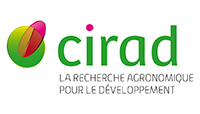Floristic structure, potential carbon stocks, and dynamics in cocoa-based agroforestry systems in Côte d’Ivoire (West Africa)
Résumé
With about 46% of global production, Côte d'Ivoire is the world's leading producer of cocoa beans. However, this production contributes to deforestation, exacerbating the effects of climate change. In response to this observation, this study aims to deepen knowledge on the contribution of agroforestry systems in cocoa production areas in Côte d'Ivoire to atmospheric carbon storage. These main areas are the Centre-West, South-West, and West. In these areas, floristic richness was determined in 115 plots. Carbon stocks in living biomass, dead matter, and soil were evaluated. The dynamics of carbon stocks with age were also determined. The results revealed that the West area contains the most diversified cocoa agroforests, with 161 species compared to 71 and 119 in the Centre-West and South-West, respectively. Entandrophragma angolense, Nesogordonia papaverifera, and Sterculia oblonga, common to these areas, are on the IUCN Red List. Carbon stock varies by area, its history, the practices present, and especially the associated species. Thus, in the former cocoa production zone (Centre-West) and the current main production zone (South-West), Elaeis guineensis is the main carbon reservoir, with 25.576 tC.ha⁻ 1 in the Centre-West and 36.862 tC.ha⁻ 1 in the South-West. In the West, local trees form the main carbon reservoir with 11.701 tC.ha⁻ 1 . The dynamics of total carbon stocks show heterogeneous changes in production areas according to the different stages of development of agroforestry systems. This is evidence of the complexity of carbon flow and the dynamics of cocoa systems, which are strongly influenced by the sociology of the producers.
| Origine | Publication financée par une institution |
|---|---|
| licence |




